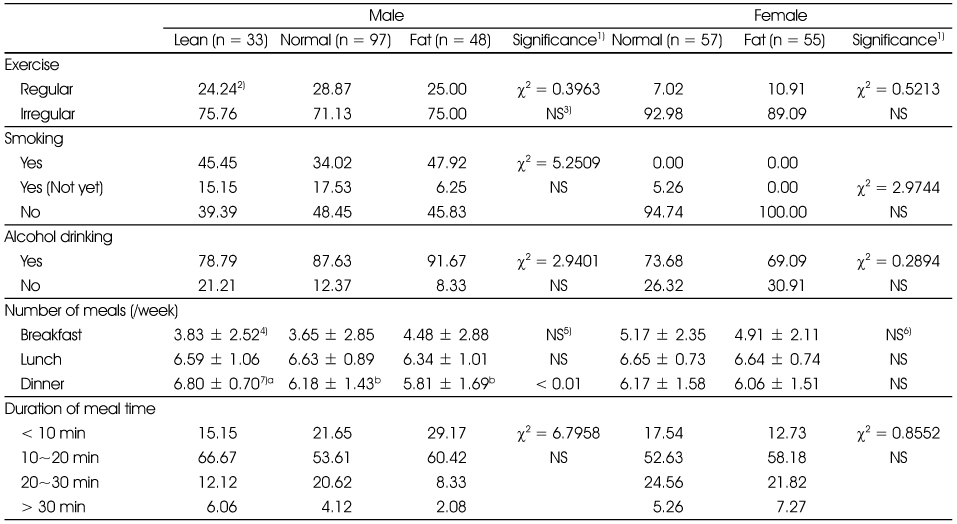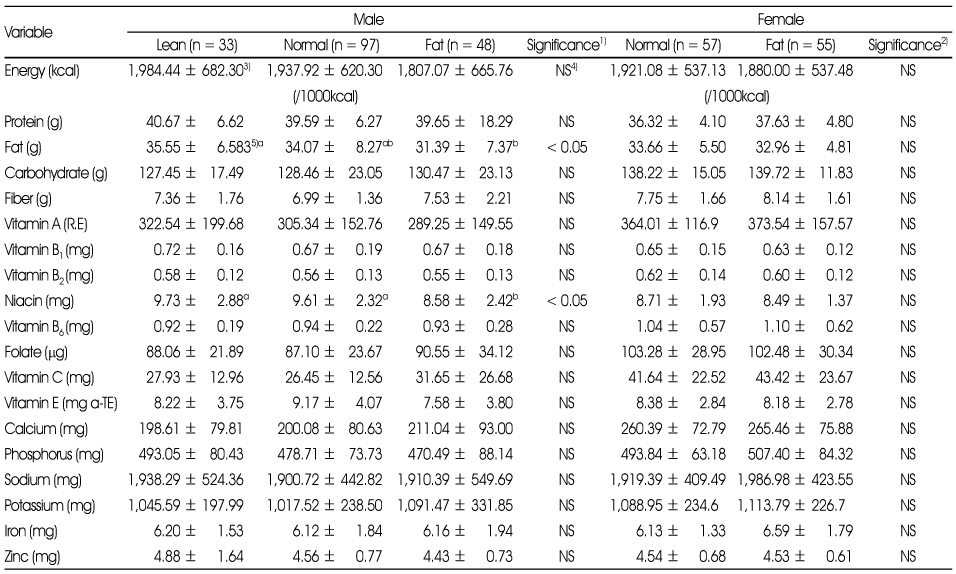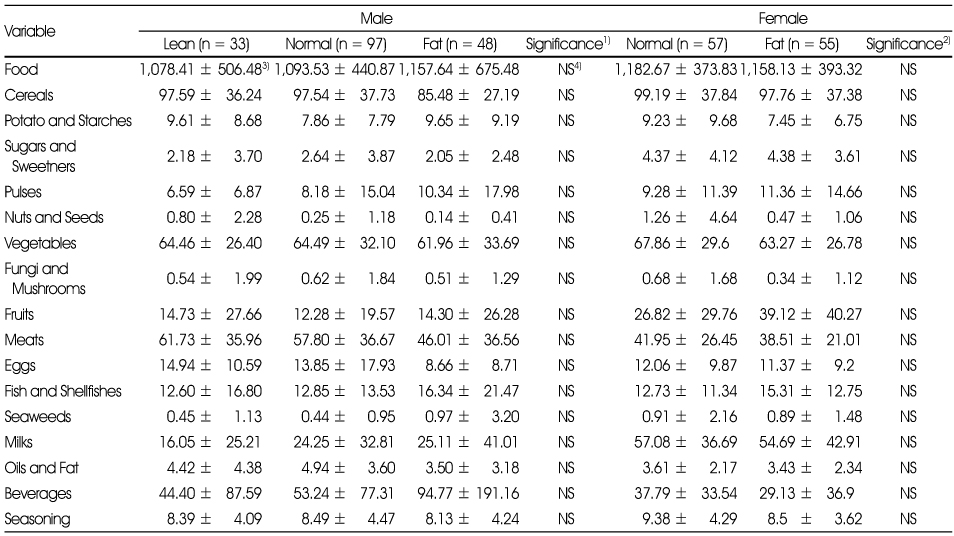References
1. Bae YJ, Kim EY, Yeon JY, Cho HK, Lee JS, Kim MH, Kim MH. Evaluation of dietary behavior, nutrient and food intake status, and dietary quality based on Diet Quality Index-International (DQI-I) in female university students. J East Asian Soc Diet Life 2010. 20(4)491–501.
2. Chin JH, Chang KJ. College students' attitude toward body weight control, health-related lifestyle and dietary behavior by self-perception on body image and obesity index. J Korean Soc Food Sci Nutr 2005. 34(10)1559–1565.
3. Chung HK, Lee HY. The concepts of weight control and dietary behaviors in high school seniors. Korean J Nutr 2010. 43(6)607–619.
4. Hong MS, Pak HO, Sohn CY. A study on food behaviors and nutrient intakes according to body mass index and body image recognition in female university students from Incheon. Korean J Food Nutr 2011. 24(3)386–395.
5. Jin YH, You KH. A study on the eating habit and eating out behavior of the university students in the Gyeonggi area. Korean J Community Nutr 2010. 15(5)687–693.
6. Kant AK, Block G, Schatzkin A, Ziegler RG, Nestle M. Dietary diversity in the US population, NHANES II, 1976-1980. J Am Diet Assoc 1991. 91(12)1526–1531.
7. Kant AK. Indexes of overall diet quality: a review. J Am Diet Assoc 1996. 96(8)785–791.
8. Kim KH. Comparisons of dietary, living habits and blood parameters in underweight and overweight university students. Korean J Food Cult 2006. 21(4)366–374.
9. Kim MH, Jeong ES, Kim EJ, Chol HK, Bae YJ, Choi MK. Night eating status of university students in partial area of Chungnam. J East Asian Soc Diet Life 2011. 21(4)563–576.
10. Kim SY, Lee HM, Song KH. Body image recognition and dietary behaviors of college students according to the body mass index. Korean J Community Nutr 2007. 12(1)3–12.
11. Krebs-Smith SM, Smiciklas-Wright H, Guthrie HA, Krebs-Smith J. The effects of variety in food choices on dietary quality. J Am Diet Assoc 1987. 87(7)897–903.
12. Lee JH, Kim MS, O JH. A comparative study on perceptions of body image, body satisfaction, and dietary habits of beauty art major and non-major female college students. J East Asian Soc Diet Life 2007. 17(4)463–473.
13. Ministry of Health and Welfare [MOHW]. Korea Center for Disease Control and Prevention [KCDCP]. Korea Health Statistics 2009: Korea National Health and Nutrition Examination Survey(KNHANES IV-3) 2010. Seoul:
14. Mirmiran P, Azadbakht L, Esmaillzadeh A, Azizi F. Dietary diversity score in adolescents - a good indicator of the nutritional adequacy of diets: Tehran lipid and glucose study. Asia Pac J Clin Nutr 2004. 13(1)56–60.
15. Park KA. Dietary habits, body weight satisfaction and eating disorders according to the body mass index of female university students in Kyungnam province. J East Asian Soc Diet Life 2009. 19(6)891–908.
16. Ries CP, Daehler JL. Evaluation of the nutrient guide as a dietary assessment tool. J Am Diet Assoc 1986. 86(2)228–233.
17. Szponar L, Rychlik E. Dietary intake elderly subjects in rural and urban area in Poland. Pol Merkur Lekarski 2002. 13(78)490–496.
18. The Korean Nutrition Society. Dietary Reference Intakes for Koreans 2010. Seoul:
19. World Health Organization. The asia-pacific perspective. Redefining obesity and its treatment. International Diabetes Institute [internet] 2000. Sydney: Health communications Australia Pty Ltd.; Available from
http://www.obesity.asiapacific.com/dafault.htm\.
20. Yeon JY, Bae YJ. Evaluation of nutrient and food intake status, and dietary quality -Focused on comparison with overweight and normal female university students-. Korean J Food Nutr 2010. 23(4)453–461.
21. You JS, Chin JH, Chang KJ. Prevalence of constipation, bowel habits and nutrient intakes of college students in Incheon area. Korean J Nutr 2009. 42(8)702–713.








